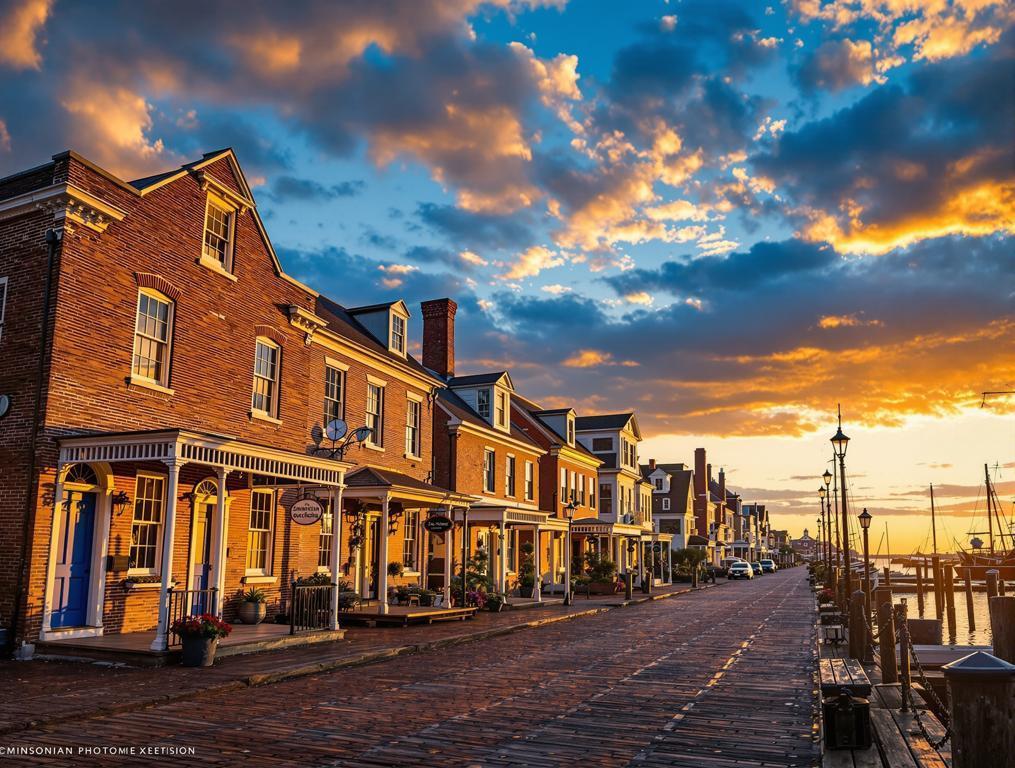I step onto Front Street just as the morning sun catches the weathered brick of Beaufort’s historic district. A fisherman nods as he passes, tackle box in hand. This coastal hamlet of just 5,052 residents stretches before me, where 60% of buildings are listed on the National Register of Historic Places. The salt-tinged breeze carries whispers of Blackbeard’s legacy through streets where the infamous pirate once walked.
Three centuries after its founding in 1709, Beaufort remains one of North Carolina’s best-preserved secrets, sitting 175 miles east of Raleigh along the Crystal Coast. As I trace my fingers along the wooden railings of a colonial-era porch, I can’t help but wonder how such a historical treasure remains largely overlooked by the crowds that flock to Charleston and Savannah.
The town where Blackbeard once plotted piracy now preserves America’s maritime past
Beaufort’s colonial architecture isn’t fabricated for tourists—it’s authentic. Walking these streets feels like stepping through a wrinkle in time where Federal-style homes and weathered docks tell stories of maritime adventure.
“We’re not like those other coastal towns with their gift shops and chain restaurants,” a local historian tells me at the North Carolina Maritime Museum. “The same waters Blackbeard navigated still lap at our shores. The same buildings still stand.”
The museum houses actual artifacts from Queen Anne’s Revenge, Blackbeard’s flagship discovered offshore in 1996. Unlike the sanitized pirate attractions elsewhere, Beaufort’s connection to the Golden Age of Piracy is tangible and academically significant.
America’s small towns often guard powerful historical narratives, from Blackbeard’s exploits in Beaufort to the Dakota love tragedy preserved in Stockholm, Wisconsin. What makes Beaufort special is how completely it preserves its colonial past—a rarity in our rapidly developing nation.
How Beaufort preserved its soul while others surrendered to tourism
While Beaufort preserves its colonial heritage, other historic coastal towns like Ocean Grove, NJ have similarly maintained their Victorian architecture. But Beaufort offers something different: a living connection to America’s maritime frontier.
“I’ve visited Savannah and Charleston, but they feel like movie sets compared to Beaufort. Here, you’re not just seeing history—you’re living in it. Yesterday, I watched a wooden boat being built using techniques from the 1700s.”
The town’s small population belies its summer popularity when visitor numbers swell by nearly 50%. Yet even then, Beaufort never feels overwhelmed. Coastal heritage towns like Beaufort and Tilghman Island, Maryland maintain authentic maritime traditions that larger tourist destinations often lose.
The heart of Beaufort’s mystique lies in the Hammock House, where Blackbeard allegedly once hanged a woman from an oak tree. Standing before the restored 18th-century structure, it’s easy to imagine the notorious pirate plotting his next raid while gazing toward the Atlantic.
Timing your visit for maximum pirate treasure
Visit Beaufort during early July 2025 to experience the annual Pirate Invasion Festival, when costumed reenactors storm the harbor and historical demonstrations bring the golden age of piracy roaring back to life. Arrive on weekday mornings to explore the Maritime Museum with minimal crowds.
Park for free along Front Street before 10 AM, then explore on foot—the historic district spans just 16 walkable blocks. For the best photos, board the $12 harbor cruise that departs hourly from the town dock, offering unmatched views of Beaufort’s waterfront homes.
Like ancient temples that tell stories through their carvings, Beaufort’s colonial buildings reveal maritime history through their architecture. The low-slung porches designed to catch sea breezes and widow’s walks where captains’ wives once scanned the horizon tell stories no textbook can capture.
As sunset paints Taylor’s Creek in amber hues, I watch wild horses grazing on Carrot Island across the water. In Beaufort, history isn’t locked behind museum glass—it’s alive in the creaking docks, salt-weathered shingles, and sea stories shared by locals whose families have fished these waters for generations.
This town has preserved something increasingly rare in America: an authentic connection to our maritime past that hasn’t been polished and packaged for mass consumption. Like a treasure chest hidden in plain sight, Beaufort waits to be discovered by travelers willing to look beyond the obvious.
